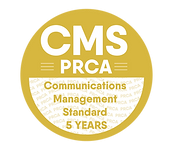Affordability, welfare reform and avoiding cliff edges: Housing in Northern Ireland
09 August 2019 - by Gráinne WalshAhead of the Chartered Institute of Housing ‘Housing Festival’ conference today, let’s take a look at some of the issues that housing professionals, the Department as well as those of us with an interest in housing policy, are dealing with.
Clearly, the ending of NI specific Welfare Reform mitigations in March 2020 is the macro policy, political and financial backdrop to all discussions about housing, particularly but not exclusively social housing.
Given the increasing number of people in the private rented sector, the 2020 deadline has repercussions far beyond Housing Executive and Housing Associations’ tenants.
Looking to those who own their own homes, Joseph Rowntree Foundation research published in 2018 shows that 43% of those in poverty are owner-occupiers, compared to only a third in the UK, and critically, the poorest fifth of the working-age population are much more likely to spend more than a third of their income on housing costs (26%) than the rest of Northern Ireland’s population.
And it’s this issue of affordability, specifically the definition of affordable housing, which is the subject of consultation by the Department for Communities. Launched on 24th June, this consultation recognises the changing nature of social and affordable housing, aims to bring the definition of affordable housing up-to-date.
The current definition,which is limited to social rented housing and shared ownership housing (intermediate housing), is too narrow and product based, and no longer appropriate in the context of the local development plans currently being brought forward by local government. The proposed definition is very simple "housing provided for sale or rent outside of the general market, for those whose needs are not met by the market".
It is primarily a supply side definition and intended to support mixed tenure and a wider variety of affordable products such as intermediate rent, discounted sale and rent own products.
What it is not is a definition of what is affordable from the homeowner and renter perspective: What proportion of people's income is it reasonable for them to pay on housing costs? That of course would take us into a discussion about rent levels, welfare reform and the reducing access to home ownership for young people.
So, clearly, recent changes in policy and funding environment facing the social and affordable housing sector in Northern Irelandare moving the sector further towards
- the need for greater co-production such as pulling private developers into providing affordable homes through planning agreements;
- targeting of resources to meet the needs of a changing and aging population;
- engaging with Councils’ Local Development Plans; and
- working in coalition with other groups to avoid the #cliffedgeNI ending of welfare mitigations
Furthermore, there is the need to legislate for the reclassification of housing associations in Northern Ireland under Office of National Statistic (ONS) guidelines. This legislation has been brought forward in England, Scotland and Wales, reclassifying housing associations as private sector bodies. Without legislation forthcoming, housing associations may face difficulties in accessing funding in the futureleading to drop in the number of affordable homes being delivered.
While the UK Government has pledged in parliament to bring forward legislation on two occasions, no legislation has been brought to the House as yet, and time is quickly running out to bring forward a solution.
So, a lot going on, and we haven’t even explored what Brexit might mean for house building and home buying. Northern Ireland Affairs Committee has been very active at Westminster, holding a number of inquiries into issues including health, education, and welfare reform. It’s not unreasonable to ponder if housing might be next.








